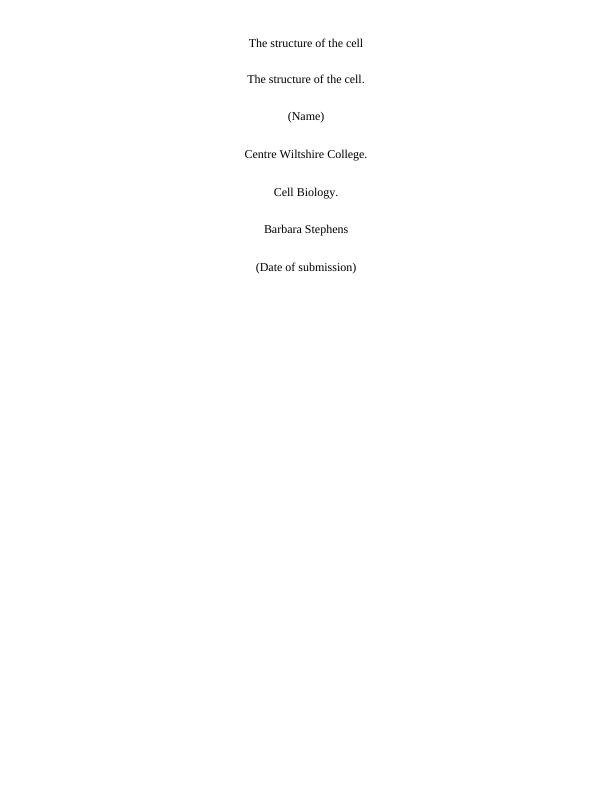The structure of the cell. 9 The structure of the cell
14 Pages2919 Words55 Views
Added on 2020-03-16
About This Document
3 Proteins 4 Monosaccharides 5 Nucleic acids 6 Methods that substances use to move in and out of cells 7 Enzymes 8 Introduction 8 Hypothesis. The endoplasmic reticulum appears as a rich network of flattened tubes and sacs bound by a membrane. The rough endoplasmic reticulum is involved in protein synthesis, it is found in cells that synthesize proteins. The Golgi apparatus has a series of flattened, stacked membrane bound sacs, tubular extensions and vesicles.
The structure of the cell. 9 The structure of the cell
Added on 2020-03-16
ShareRelated Documents
End of preview
Want to access all the pages? Upload your documents or become a member.
(PDF) Protein Synthesis - Assignment
|4
|696
|211
Cell Types in the Human Digestive System: Red Blood Cells, Kupffer Cells, Goblet Cells, Enterocytes, Chief Cells
|4
|1367
|244
Cell Biology and Biochemistry
|8
|2140
|1
Biology in Everyday Life: Cell Structure and Function
|5
|1355
|94
Compartmentalization of cells PDF
|4
|833
|241
Biochemistry Learning
|5
|1160
|253




